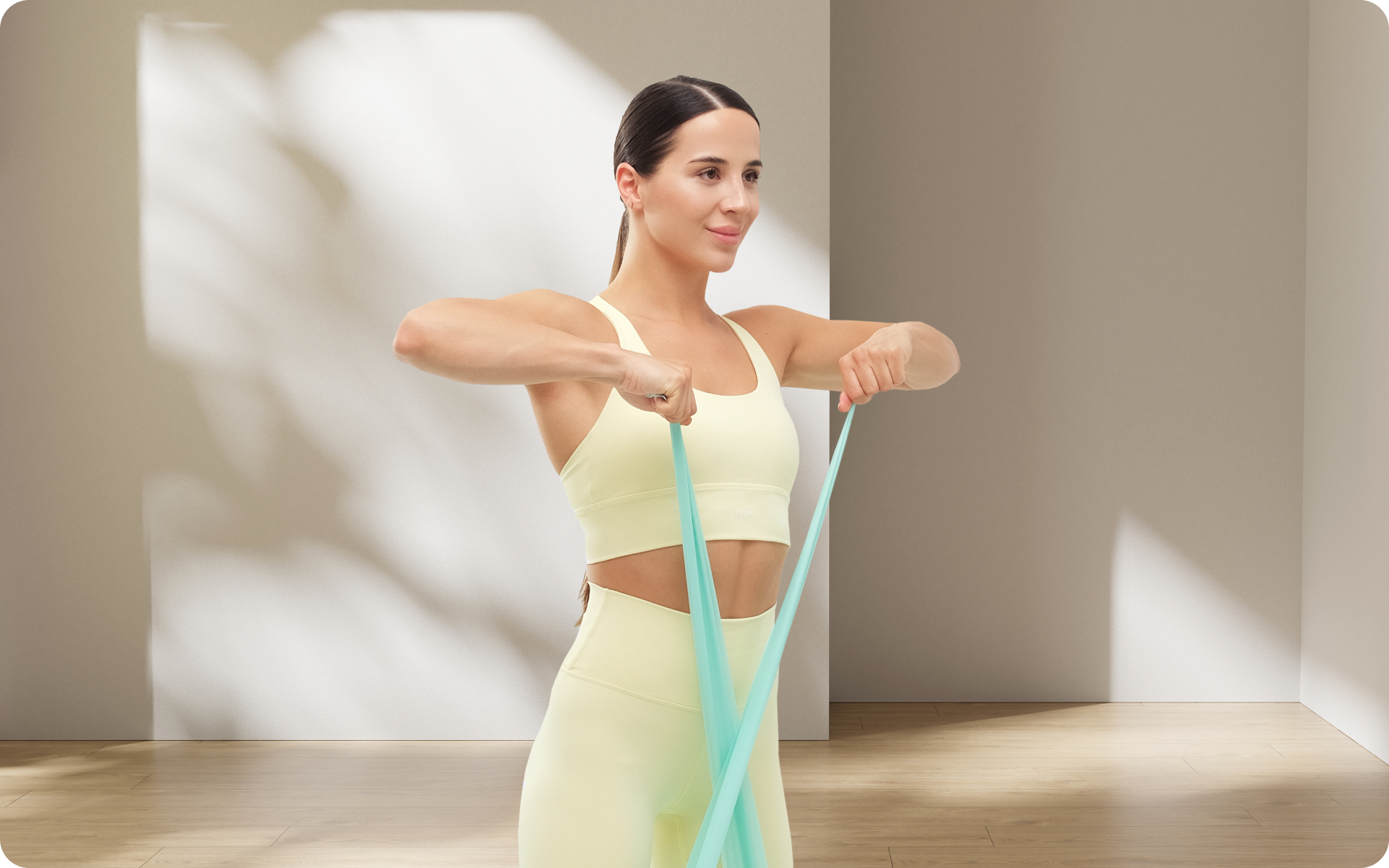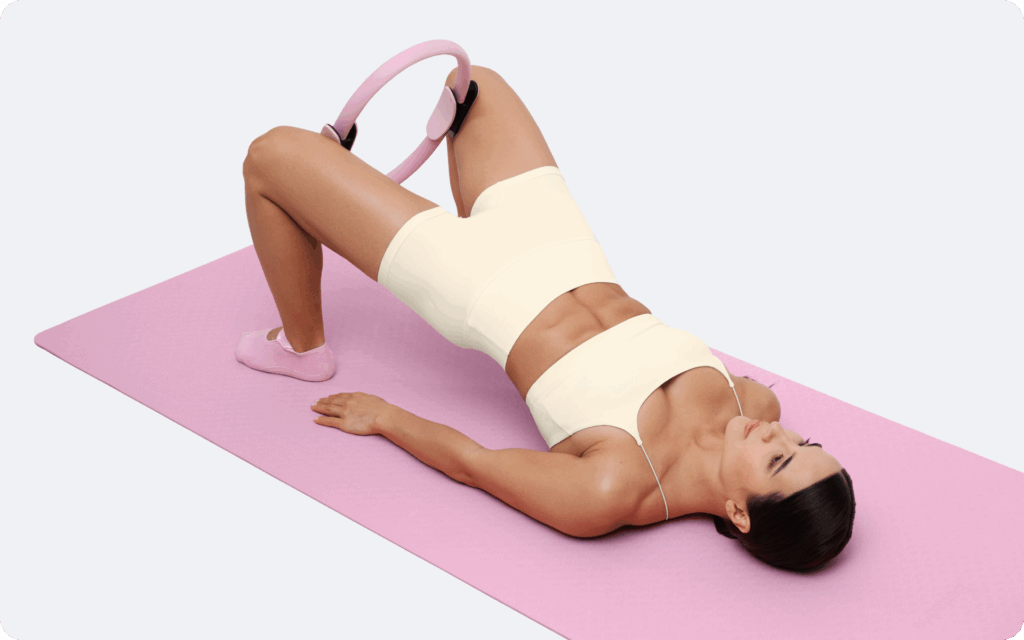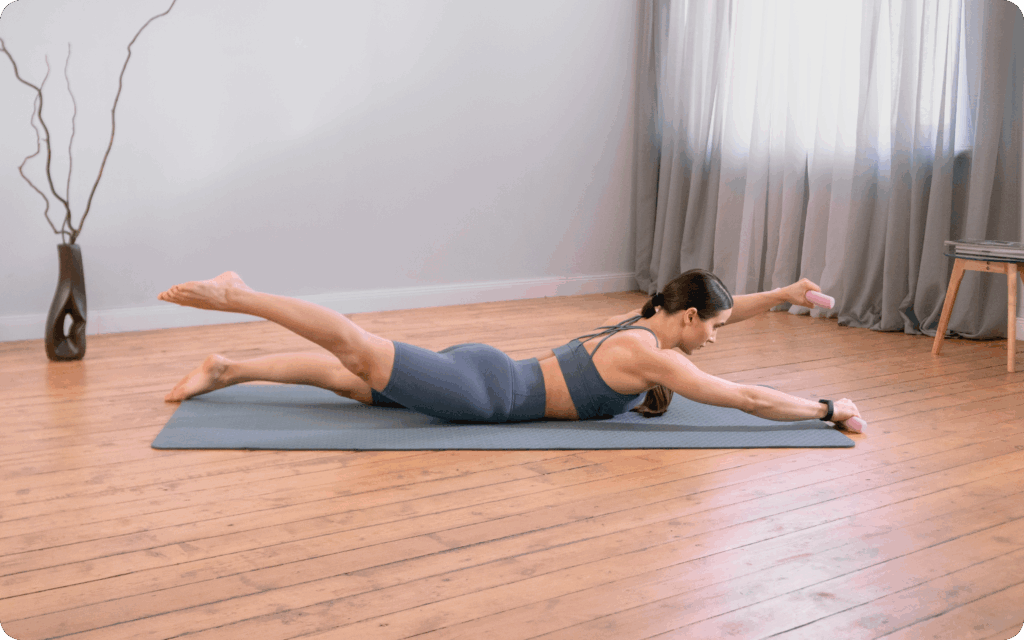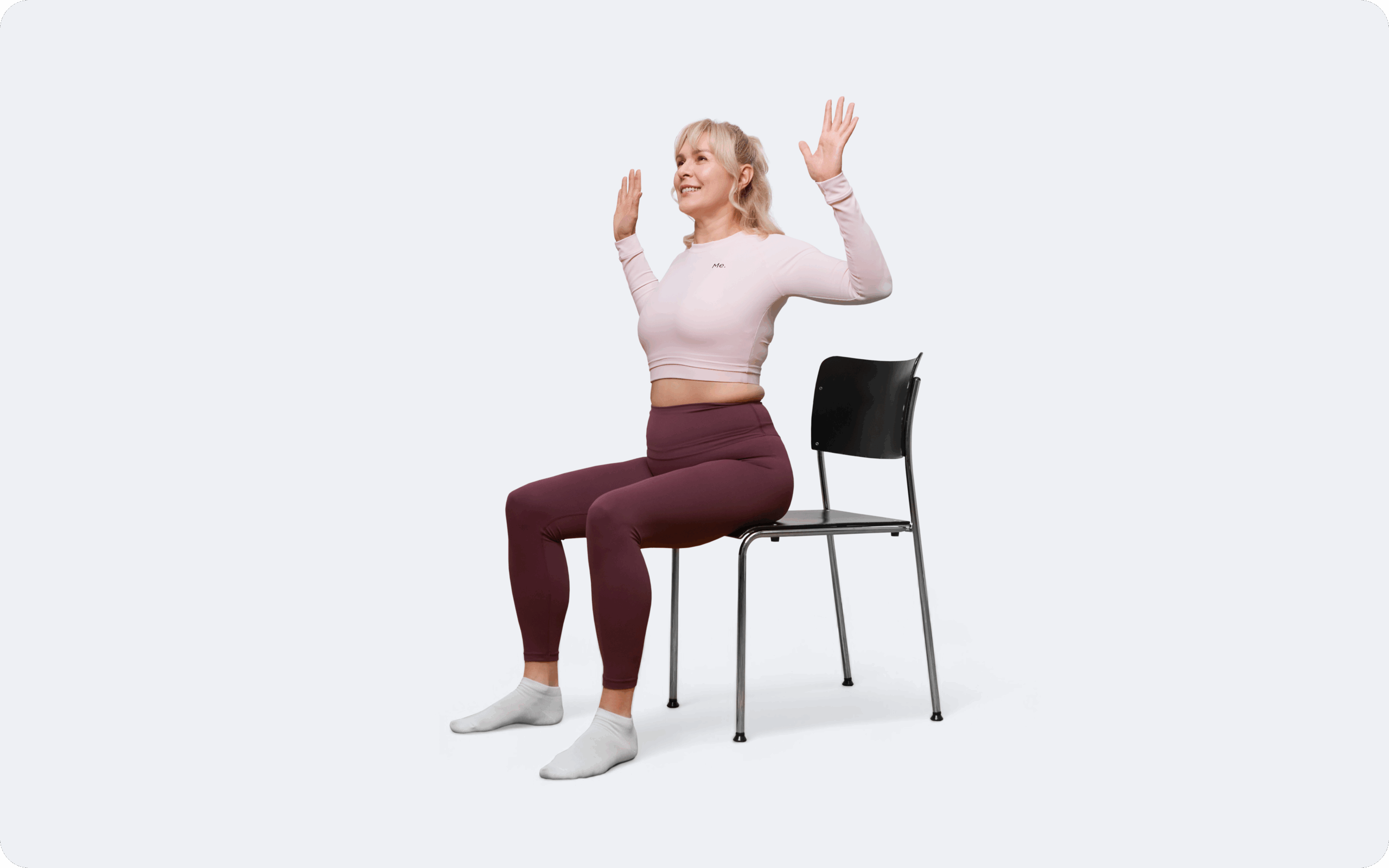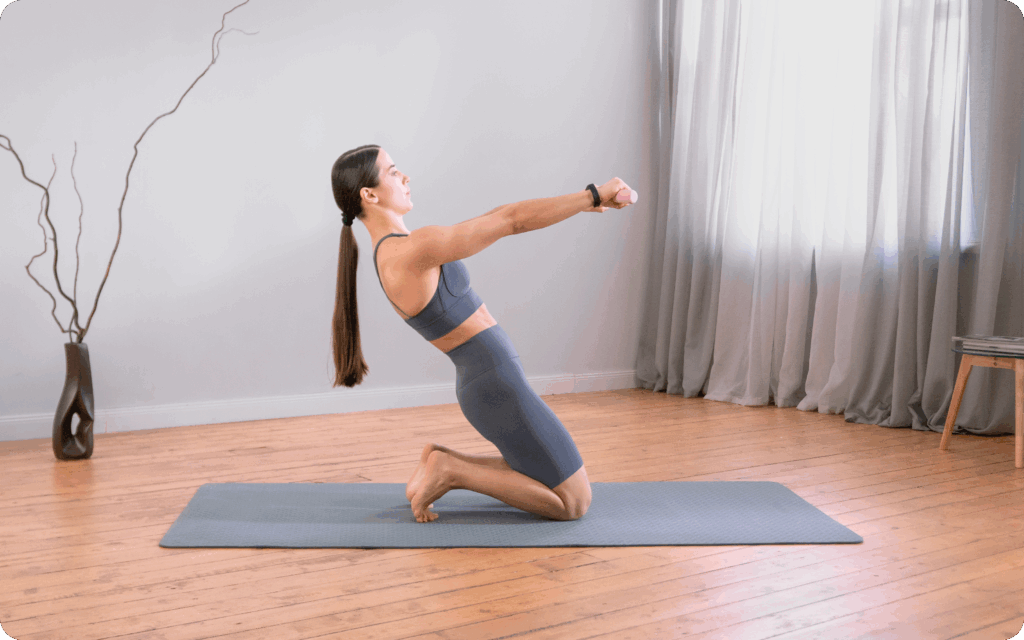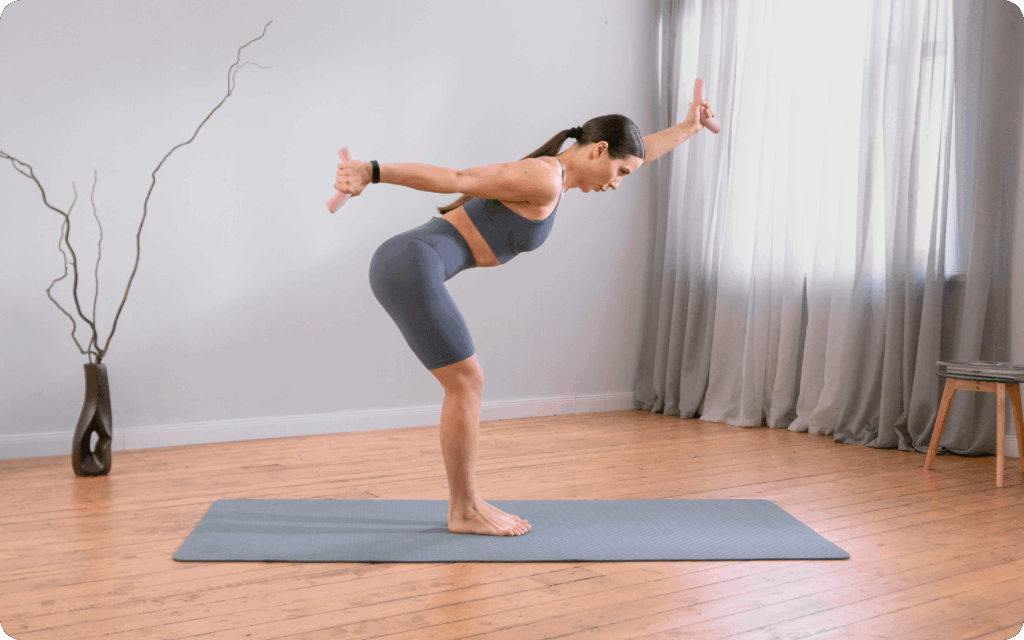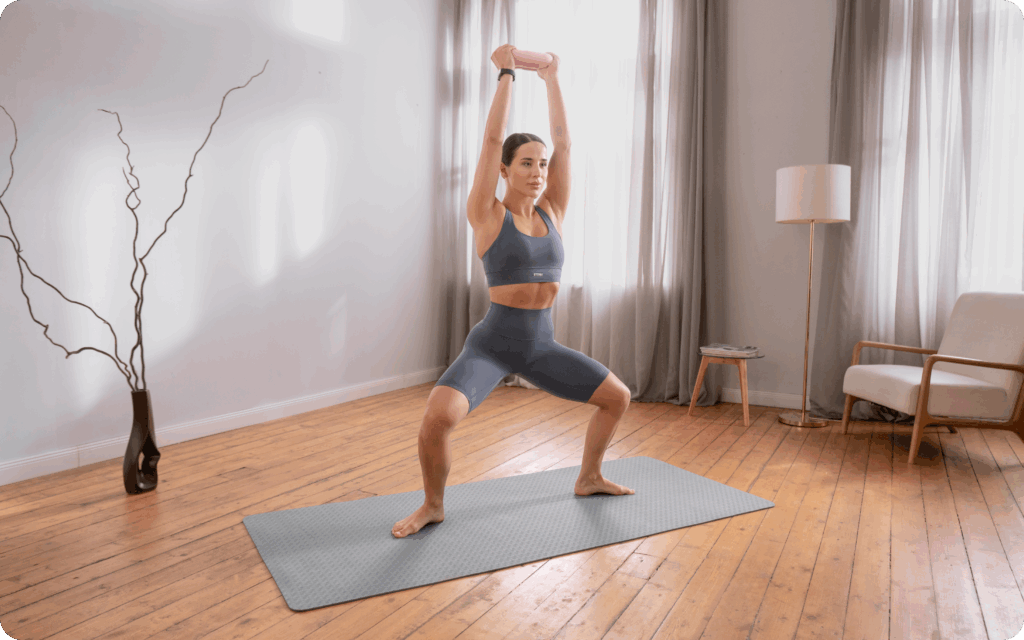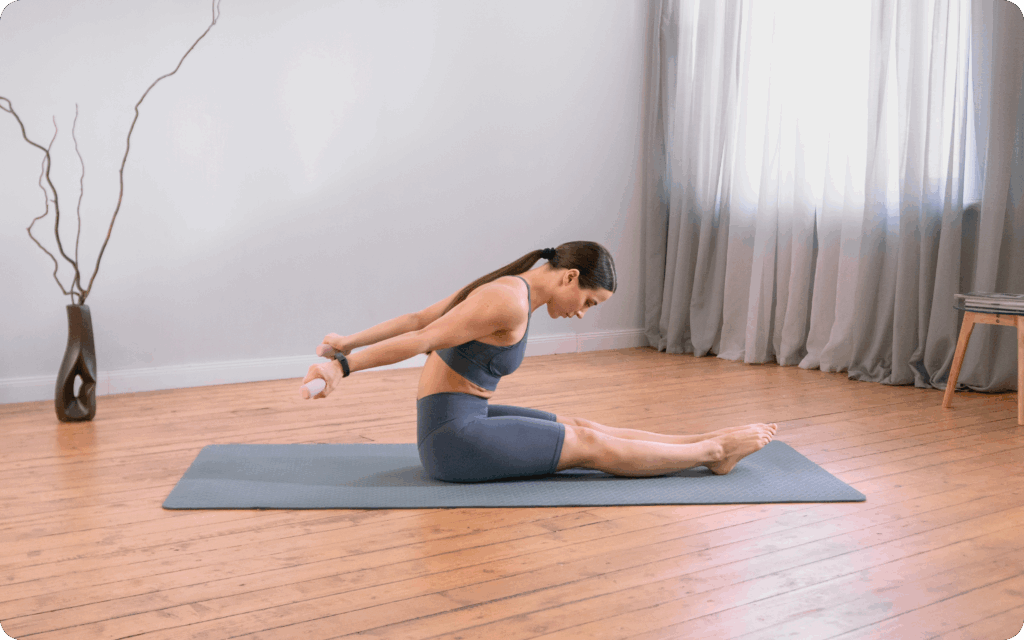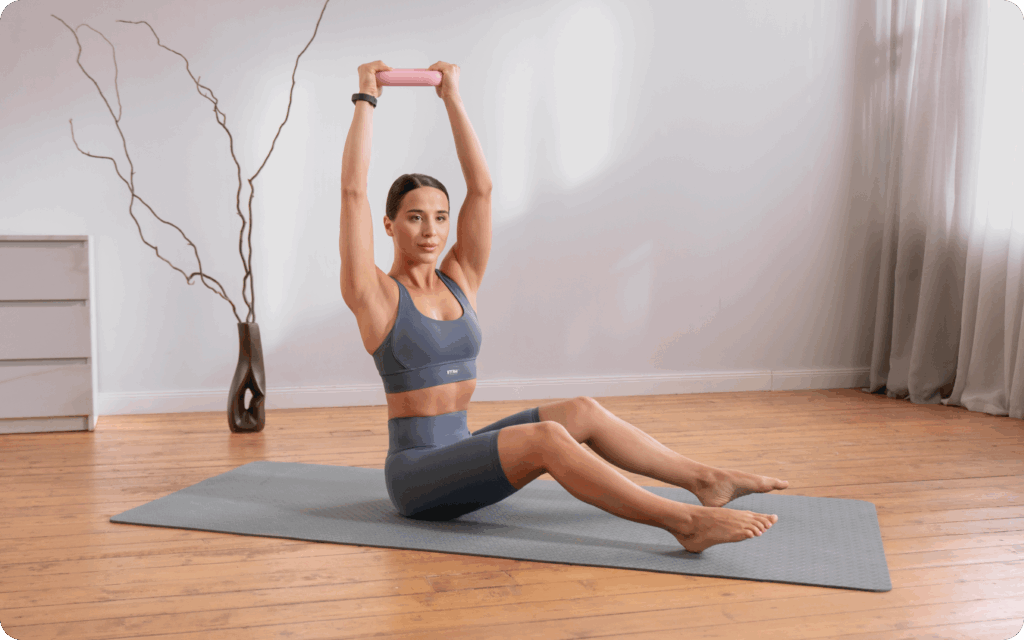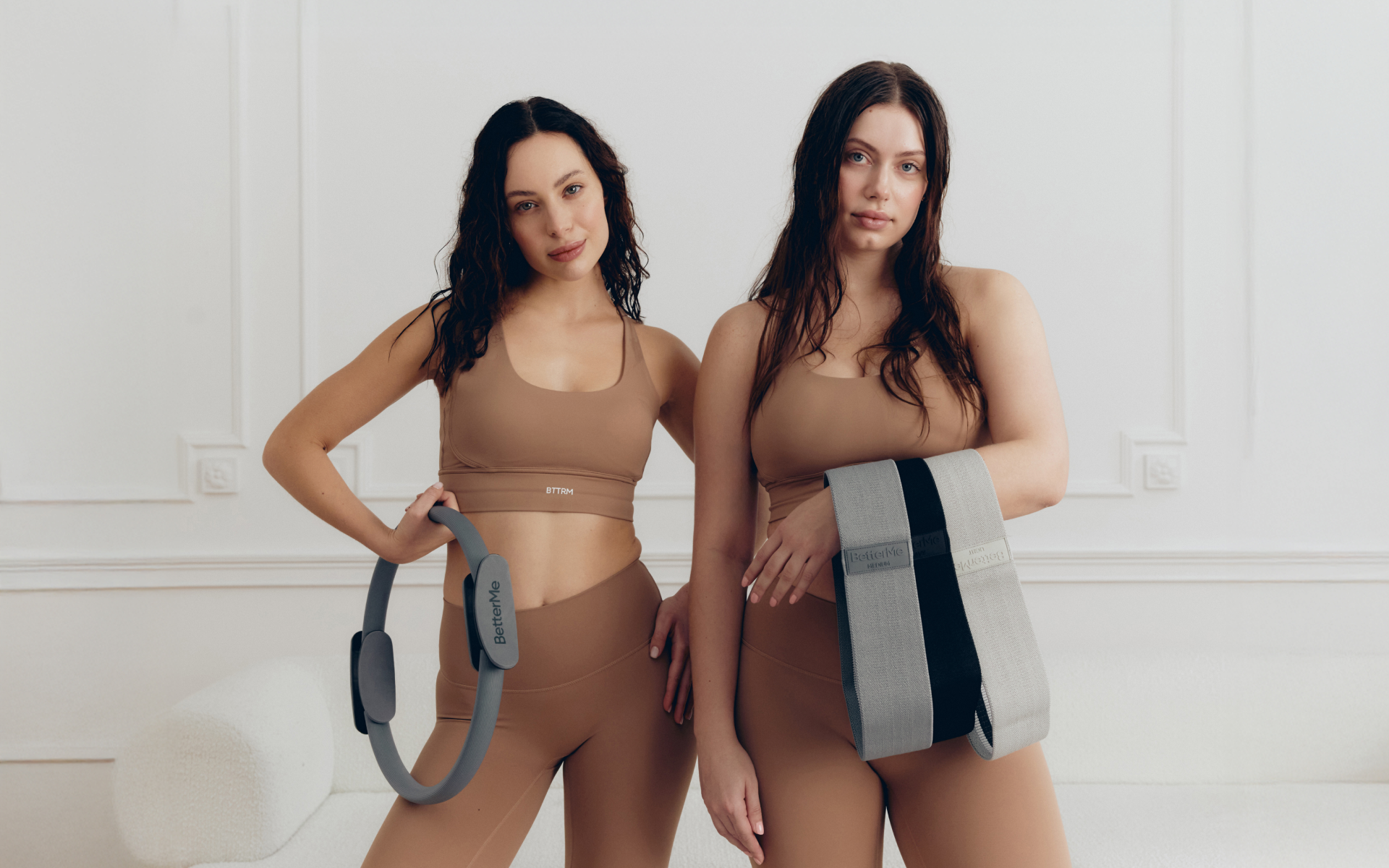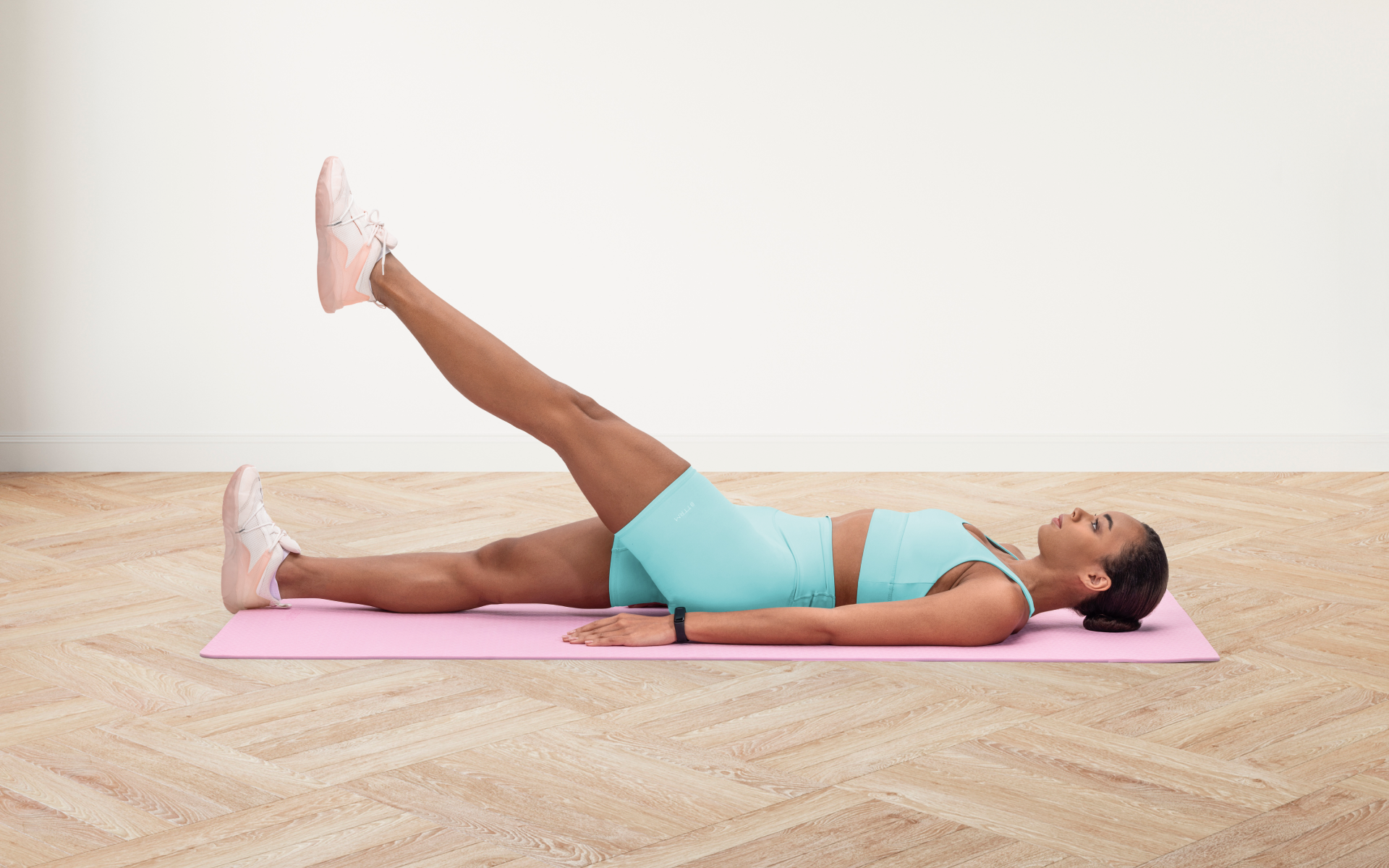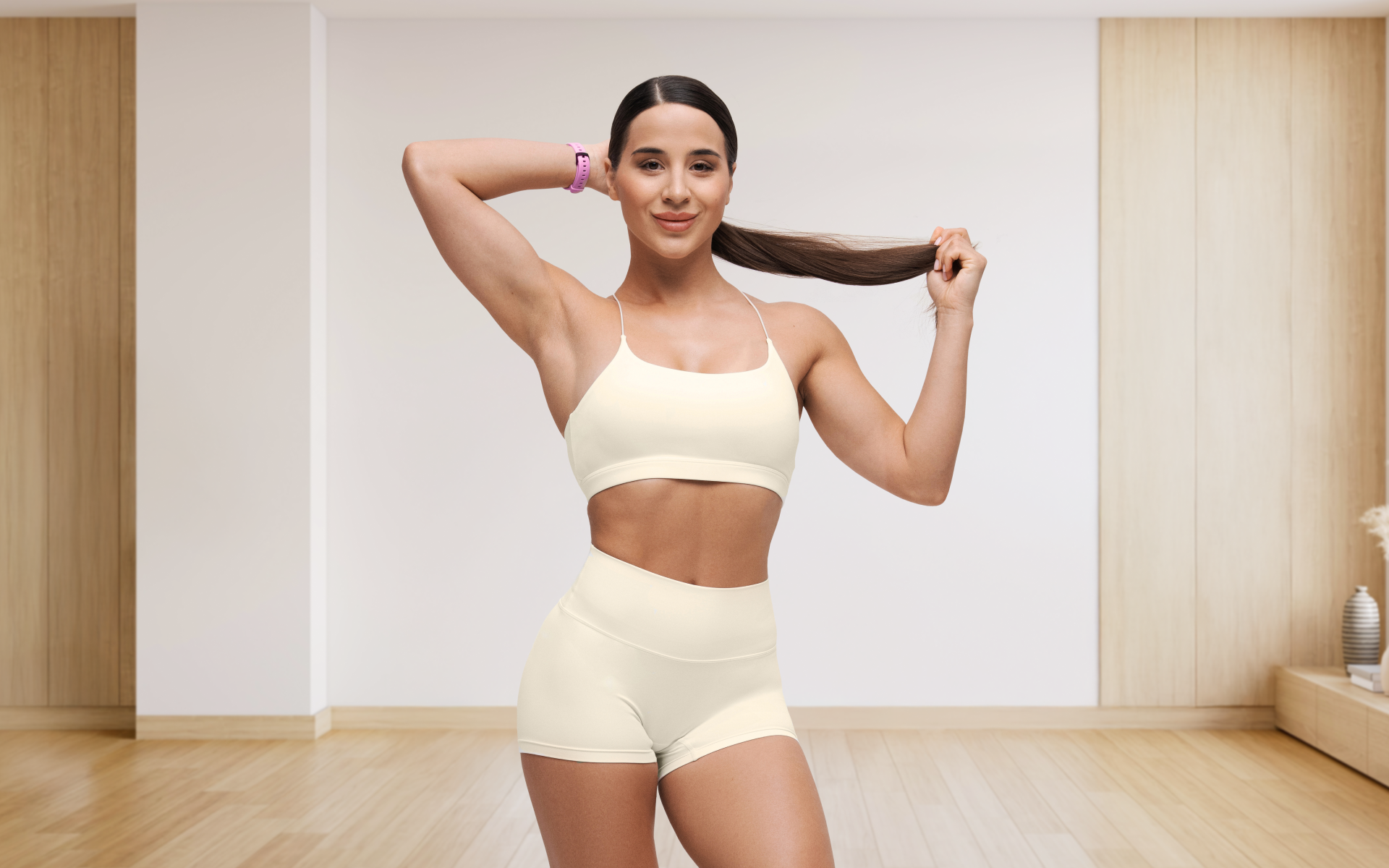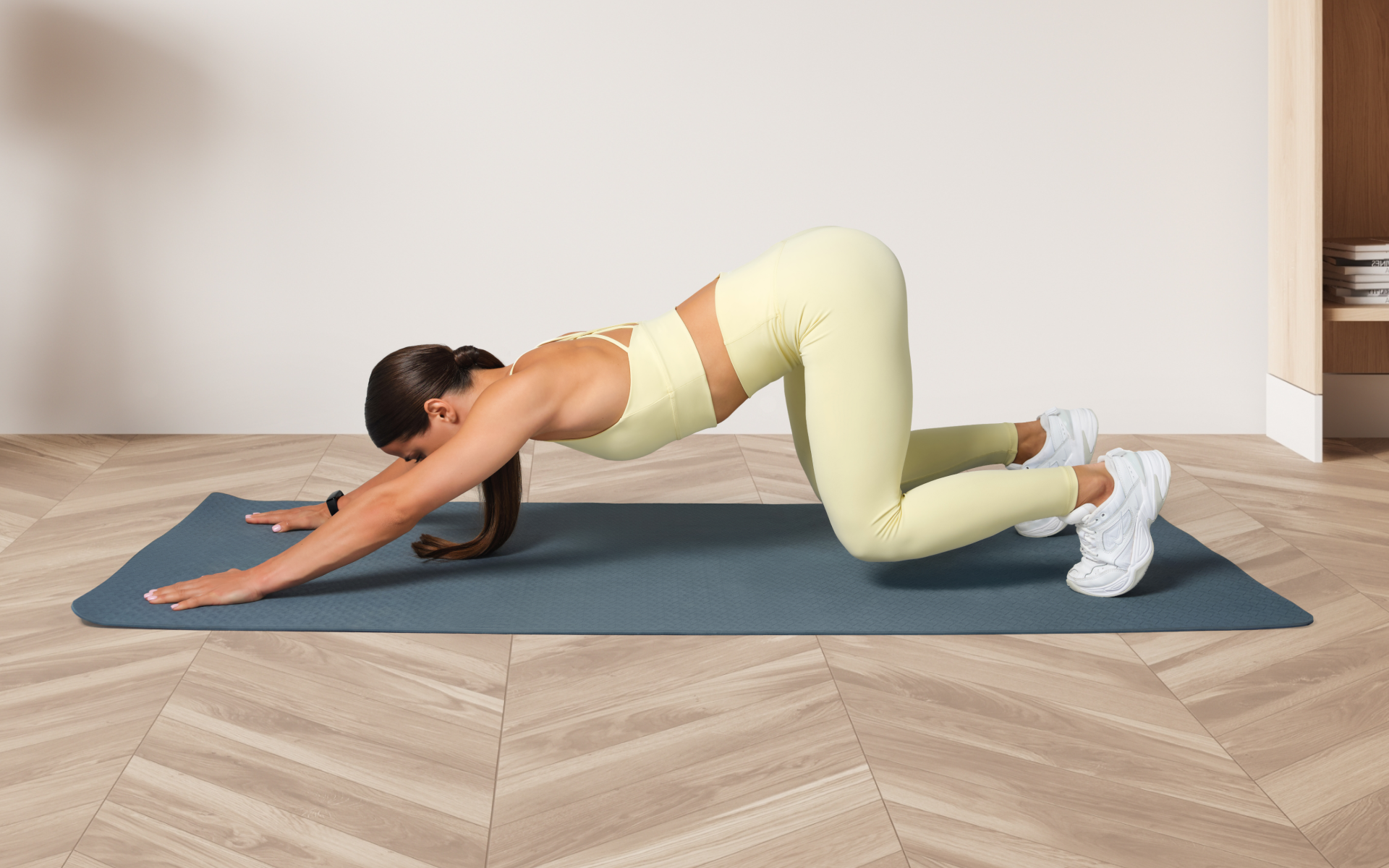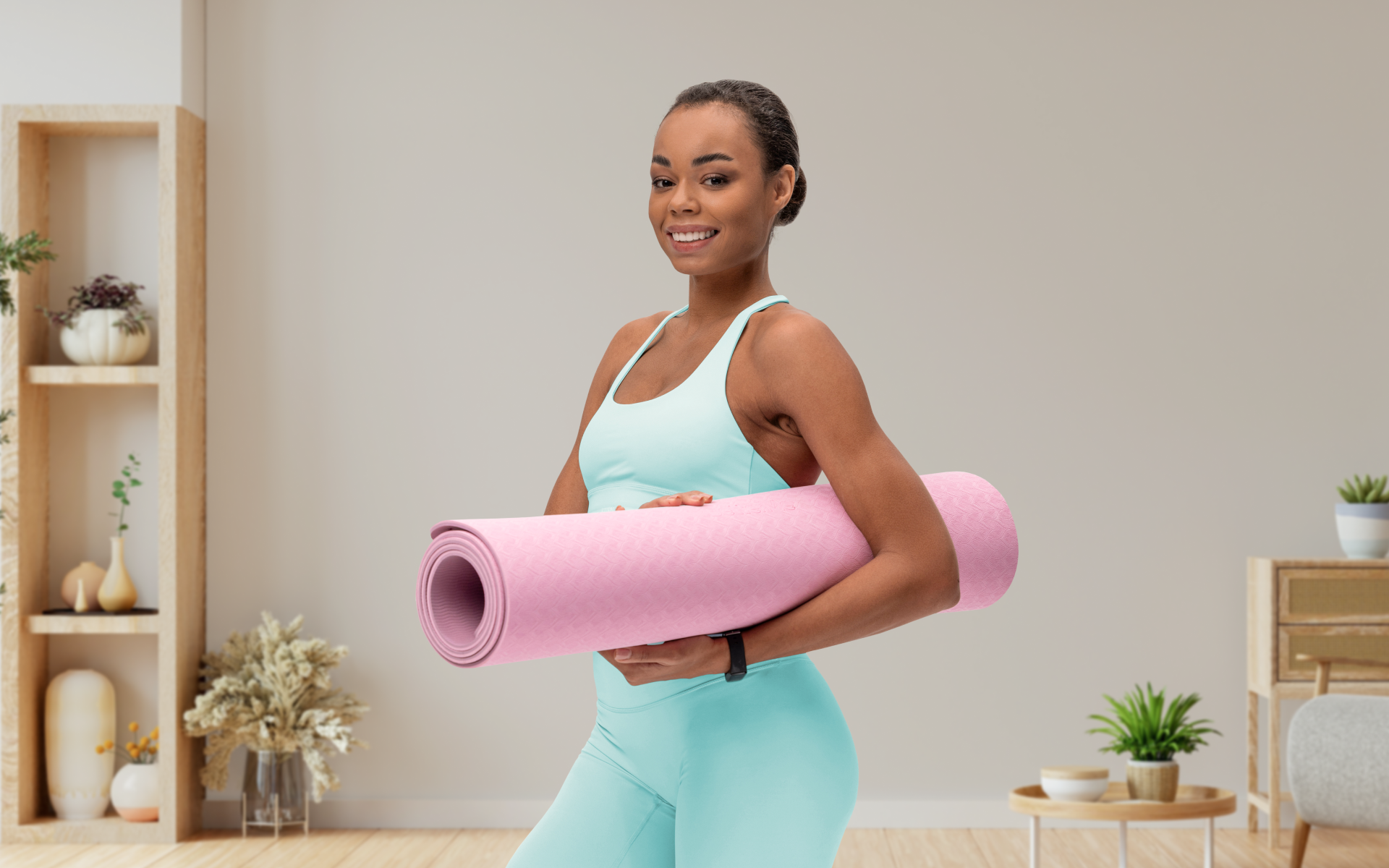Poor posture has become a growing concern in today’s world. With more people working desk jobs and spending long hours in front of computers, posture-related issues are on the rise!
The good news is that with the right approach, we can reverse most posture issues.
One impactful solution is Pilates. It’s a low-impact exercise method that many praise for improving strength, balance, and bodily awareness.
In this article, we’ll explore Pilates exercises for posture correction and why spending just a few minutes on the mat each week can make a noticeable difference.
What Are Pilates Posture Exercises For Alignment?
As mentioned, poor posture often creeps up on us.
Most of us may have felt it at some point if we spend hours sitting or looking down at screens. But the right kind of movement can realign your body and strengthen the muscles that keep you upright.
A 2015 study published in The Journal of Physical Therapy Science, titled “Effects of Pilates Exercise on Postural Alignment and Body Composition of Middle-Aged Women,” found that Pilates strengthens deep abdominal and back muscles that support the spine.
The research revealed that increased muscle mass improves trunk postural alignment, while higher body fat levels can negatively affect balance (1).
In short, Pilates for posture correction works because it can build the deep muscle strength needed to maintain alignment.
A few simple exercises to improve posture are as follows:
Pelvic Curl
- Lie on your back with your knees bent and your feet flat on the floor.
- Inhale to prepare; exhale as you lift your hips off the mat, one vertebra at a time.
- Pause when your body forms a straight line from shoulders to knees.
- Inhale, then exhale as you roll back down slowly.
- Repeat 8 to 10 times.
Spine Stretch Forward
- Sit tall with legs extended and arms reaching forward.
- Inhale deeply; as you exhale, round your spine forward, keeping your core engaged.
- Relax your shoulders and feel the stretch through your back.
- Inhale to return upright.
- Repeat 5 to 8 times.
Swimming
- Lie face down with arms extended overhead.
- Engage your core and lift your arms, legs, and chest slightly off the mat.
- Flutter your arms and legs gently, as if swimming.
- Maintain steady breathing and lengthen through your spine.
- Continue for 20 to 30 seconds, then relax.
Chest Expansion
- Sit or kneel tall with arms by your sides.
- Inhale as you extend your arms backward, squeezing your shoulder blades together.
- Exhale to return to the start.
- Repeat 8 to 10 times.
BetterMe: Health Coaching app helps you achieve your body goals with ease and efficiency by helping to choose proper meal plans and effective workouts. Start using our app and you will see good results in a short time.
With consistent practice, these movements can do wonders for your body.
They can align your spine, strengthen your core, and release the stiffness from sitting all day. Before long, you’ll notice yourself standing taller, moving more confidently, and feeling the full benefits of Pilates for posture correction.
Read more: Shoulder Dumbbell Workout: 6 Exercises to Help You Build Muscle
Can You Correct Years Of Bad Posture?
Yes. But remember, it’s not an overnight fix. You can correct years of bad posture with patience, consistency, and a mix of strengthening and stretching.
As Beth Linker, a health historian, pointed out in The New York Times (2024), even the idea of “perfect posture” has evolved. It is no longer about rigid straightness.
Instead, it circles balanced movement and mindful alignment. In other words, fixing your posture isn’t about forcing your body into stiff positions; it’s about retraining your muscles and habits.
The first step is awareness. Most people develop postural imbalances like upper cross syndrome (rounded shoulders and forward head from sitting too long) or lower cross syndrome (arched lower back and tilted pelvis from weak core and glutes) (2)(3).
Correcting these takes mindful daily checks:
- When sitting: Keep your feet flat on the floor, tuck your chin slightly, and draw your shoulder blades together.
- When standing: Keep your knees soft (not locked), align your pelvis neutrally, and bring your head and shoulders back.
- When lying down: Use pillows strategically. Keep one between your knees if you’re a side sleeper, or under your knees if you sleep on your back.
Beyond posture checks, lasting improvement comes from consistent movement.
Pilates exercises for flat back posture and simple stretches to improve posture can be quite helpful. Pilates helps strengthen your deep core and back muscles, which support spinal alignment (4).
Meanwhile, stretching can release the tight areas that pull your posture out of balance (5).
A balanced approach includes both:
- Stretching: To loosen tight, overworked muscles, like your chest, hip flexors, and hamstrings (4). Hold each stretch for 15 to 30 seconds, repeat 2-3 times, and breathe steadily.
- Strengthening: To activate underused muscles that keep your posture upright. Consider planks, bridges, and gentle Pilates moves that engage your abs and glutes (5).
It’s also crucial to avoid the “quick fix” myth.
Posture braces and ergonomic chairs can help temporarily, but they’re not the instant fix you’re looking for. Sustainable posture correction requires building strength, flexibility, and awareness over time.
Lastly, remember to take regular breaks throughout the day. Stand up, walk around, stretch your neck, and reset your posture every hour. These mini-breaks protect your muscles while also refreshing your focus and energy.
Can You Fix Your Posture With Pilates?
Yes, Pilates can help you improve posture if you learn the right exercises.
Their focus on mindful movement, core strength, and body alignment makes it ideal for retraining how your body carries itself daily.
Listed below are some ways in which Pilates can help you improve your posture from the inside out:
- Restoring Muscle Balance
Good posture depends on how well your muscles balance strength and flexibility.
When some muscles get tight (like hip flexors from sitting too long) and others weaken (like glutes or abs), your body starts to compensate. This compensation can cause the familiar forward head or slouched position.
Pilates can correct these imbalances by gently stretching tight areas and strengthening weaker ones. This process restores a healthy muscle length-tension balance, which, over time, helps your body naturally return to better alignment (6).
Whether you’re a workout beast or just a beginner making your first foray into the world of fitness and dieting – BetterMe has a lot to offer to both newbies and experts! Install the app and experience the versatility first-hand!
- Building A Strong, Stable Spine
A stable spine is at the heart of great posture.
Pilates can strengthen the deep stabilizing muscles surrounding the spine, such as the multifidus and transverse abdominis. They can give your back the support it needs to stay upright and pain-free (7).
When these muscles are active, your vertebrae can stack properly, reducing strain and encouraging smooth, supported movement.
- Relearning Healthy Movement Patterns
Weak muscles aren’t always the cause of poor posture. At times, your habits may be the root cause. Pilates can teach body awareness and mindful movement. This mindfulness factor can then help you recognize and correct misalignments as they happen.
Each exercise focuses on control and accuracy, allowing your body to move better and naturally hold good posture.
- Preventing Postural Problems
Long-term imbalances like rounded shoulders (kyphosis) or an overly curved lower back (lordosis) can worsen over time if not corrected. Pilates can fix this by aligning your spine, which can strengthen the muscles that support it and improve spinal flexibility (8). When done consistently, it may allow you to stand straighter and move with better balance and confidence.
Poor posture is more common than most people realize. Studies show 34 to 50% of children and teens have posture issues (9). Moreover, 30 to 50% of adults experience neck pain at least once a year (10).
Further research also highlights that bad posture is a major contributor to lower back pain and can lead to long-term problems like chronic discomfort, poor circulation, and reduced productivity (11).
If you fall into either of these categories, consistent Pilates practice can help you fix and maintain better posture. It won’t be an instant solution, but a gradual transformation that builds body awareness and confidence with every session.
Read more: Is Pilates Hard? The Answer Might Inspire You
What Type Of Pilates Is Best For Posture?
What are the best Pilates posture exercises?
If you’re particularly interested in improving your posture with Pilates, you should consider either mat or Reformer Pilates:
- Mat Pilates can be a great starting point. It focuses on using your body weight to strengthen the core, improve flexibility, and increase alignment awareness (12).
Exercises like the Pelvic Curl, Swimming, and Spine Stretch Forward are simple yet powerful moves that train your body to maintain proper posture.
- Reformer Pilates, on the other hand, uses a spring-based machine.
It adds resistance, which can help target and strengthen postural muscles more deeply. It’s pretty helpful if you want to correct muscular imbalances or need additional support during movement (13).
A 2023 study titled “Investigation of the Effects of Reformer Pilates Exercises on Posture Disorder in Women” found that women who practiced reformer Pilates for 8 weeks (90 minutes per session, 3 times a week) showed significant improvements in spinal alignment (14). The research confirmed that consistent reformer Pilates effectively corrects postural imbalances in sedentary women.
Ultimately, the Pilates posture exercises for beginners depend on what you want to achieve with your exercise routine.
You should learn more about mat Pilates to do back exercises no equipment needed.
But, if you’re looking for a resistance-based approach to refine alignment and build strength over time, you can learn more about reformer Pilates.
How Long Does It Take For Pilates To Fix Posture?
There’s no definite answer to this question. If someone claims to know this, that’s probably wrong!
Some people start noticing changes in a few weeks, while for others it might take a few months. The secret is consistency.
And while you’re refining your Pilates moves, you can make some tweaks in your general lifestyle:
- Use supportive furniture: If you sit for long hours, choose an ergonomic chair that helps keep your back straight.
- Pick the right shoes: Avoid high heels that throw your spine out of alignment. Go for comfortable, flat, or low-heeled shoes.
- Stay active: Add light exercise or stretching to your daily routine to keep your muscles strong and flexible.
- Mind your posture daily: Whether sitting, standing, or walking, remind yourself to lift your chest, relax your shoulders, and avoid slouching.
- Get professional help if needed: Visiting a chiropractor can sometimes help if spinal misalignments affect your posture (15).
All these steps work best when combined with consistent Pilates sessions.
As time passes, you may notice the transformation, not just in how you look but even in how you feel!
Posture correction takes time and depends on consistency. Most people start noticing minor improvements within 6 to 8 weeks of regular exercise, like Pilates or stretching. However, fully retraining your muscles and habits can take months or longer. Pilates and yoga both help improve posture, but they do it differently. Pilates can strengthen your core and support your spine, which are key to good posture. Yoga helps you become more flexible, balanced, and aware of your body. Pilates might show results faster if your main goal is to fix posture, while yoga is excellent for adding flexibility and relaxation. Yes! It’s never too late to improve your posture. Even if you’ve had bad habits for years, your body can still adapt and strengthen with the right exercises. Pilates helps strengthen and tone your core muscles, making your belly area look firmer and more shaped. It doesn’t directly burn belly fat, but combining it with healthy eating and regular cardio can help you lose fat and reveal a stronger, tighter midsection.Frequently Asked Questions
How many months does it take to correct posture?
Is Pilates better than yoga for posture?
Can you improve posture at 40?
Does Pilates help with belly fat?
The Bottom Line
There’s no direct, fast way to get good posture. It takes time and effort to reverse the damage bad posture has done to your back and overall body.
Pilates makes that journey easier by combining strength, flexibility, and body awareness to help your body realign naturally. Better, you don’t need fancy equipment to get started!
Simple Pilates posture exercises at home can make a real difference when done regularly. As for older adults, gentle Pilates posture exercises for seniors can improve balance and ease their transition into new phases of life.
No matter if you’re working to undo years of slouching or simply want to move easily, consistency is what matters most. Keep showing up, notice the small improvements, and celebrate them. With time, you’ll stand taller, feel stronger, and carry yourself with a natural, confident posture!
DISCLAIMER:
This article is intended for general informational purposes only and does not serve to address individual circumstances. It is not a substitute for professional advice or help and should not be relied on for making any kind of decision-making. Any action taken as a direct or indirect result of the information in this article is entirely at your own risk and is your sole responsibility.
BetterMe, its content staff, and its medical advisors accept no responsibility for inaccuracies, errors, misstatements, inconsistencies, or omissions and specifically disclaim any liability, loss or risk, personal, professional or otherwise, which may be incurred as a consequence, directly or indirectly, of the use and/or application of any content.
You should always seek the advice of your physician or other qualified health provider with any questions you may have regarding a medical condition or your specific situation. Never disregard professional medical advice or delay seeking it because of BetterMe content. If you suspect or think you may have a medical emergency, call your doctor.
SOURCES:
- Effect of mat Pilates exercise on postural alignment and body composition of middle-aged women (2018, researchgate.net)
- Upper-Crossed Syndrome (n.d., physio-pedia.com)
- Lower Crossed Syndrome (n.d., physio-pedia.com)
- Effects of Pilates exercises on spine deformities and posture: a systematic review (2024, bmcsportsscimedrehabil.biomedcentral.com)
- Practical recommendations on stretching exercise: A Delphi consensus statement of international research experts (2025, sciencedirect.com)
- Clinical effectiveness of a Pilates treatment for forward head posture (2016, pmc.ncbi.nlm.nih.gov)
- Anatomy, Back, Vertebral Column (2023, ncbi.nlm.nih.gov)
- Effectiveness of pilates method for the posture and flexibility of women with hyperkyphosis (2012, researchgate.net)
- Prevalence of Incorrect Posture among Children and Adolescents: Finding from a Large Population-Based Study in China (2020, cell.com)
- The experience and management of neck pain in general practice: the patients’ perspective (2010, pmc.ncbi.nlm.nih.gov)
- Assessing the Impact of Prolonged Sitting and Poor Posture on Lower Back Pain: A Photogrammetric and Machine Learning Approach (2024, researchgate.net)
- Comparison of Pilates and Core Exercises for Flexibility, Endurance and Weight Reduction in Adults (2024, jhrlmc.com)
- The effects of reformer pilates on postural alignment, body appreciation and social appearance anxiety in office workers (2025, bmcsportsscimedrehabil.biomedcentral.com)
- Investigation of the Effects of Reformer Pilates Exercises on Posture Disorder in Women (2023, dergipark.org.tr)
- Chiropractic adjustment (2024, mayoclinic.org)
